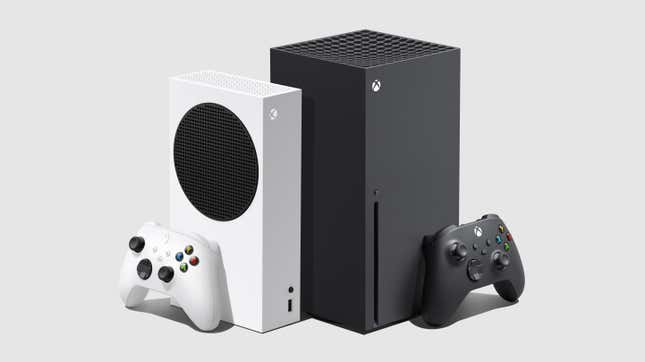
A $300 Xbox is nothing new; Microsoft has priced consoles that low before (except for the Xbox One and the One X). The difference now is that Microsoft is releasing two consoles at the same time, which it’s never done before. That’s why the $300 Xbox Series S seems so cheap compared to the beefier, $500 Xbox Series X. But for serious gamers, it might make more sense to forget about the Series S altogether.
The reason? You can’t piecemeal your way to a better console with incremental upgrades like you can with a PC. Maybe you can upgrade the HDD or SSD internally, or add an external expansion, but forget about replacing the CPU or GPU. And that’s been the point of consoles: Everything you need is already there. But for a $200 difference, you sure are getting a better deal with the Series X: more than double the GPU performance, nearly double the storage, higher output resolutions, and a 4K UHD Blu-Ray Drive.
The strategy of releasing one console at a time has worked in the past, and Microsoft is now testing the waters by changing the way the console market has historically done things.
This is assuming you plan to buy a new console outright and not take advantage of Microsoft’s All Access Upgrade, which lets you trade in your Xbox One to make monthly payments on a new Series S or X. The program itself was reintroduced just a year ago, but prior to its original launch in 2018 there was no monthly payment option. But even if you don’t plan on getting a 1TB expansion card, the Xbox Series X is still the better deal for the hardware specs. Microsoft could release only that model for now, plus the All Access Upgrade, and still have a more attractive deal than Sony’s forthcoming PS5.
Releasing differently specced versions of a single generation of hardware at the same time has typically been more of a PC thing than a console thing. Nvidia, AMD, Intel—all have released multiple variations of graphics cards or processors with each generational launch for years. (If you think the Xbox names are confusing, talk to me about Intel’s LGA 1151 rev 1 and rev 2 sockets, and the original and refreshed versions of Kaby Lake and Coffee Lake. That’s confusing!) Consoles, not so much. Nintendo has yet to do that, and Sony, while it’s releasing two versions of its PS5 at the same time, the All Digital Edition will just be sans the 4K UHD Blu-ray disc drive, and likely cost around $50 less. (Sony has yet to confirm PS5 pricing.) The rest of the specs are the same.
In the past, Microsoft has only released one console at the time, even if there were special variations or editions within a generation. The Xbox 360 launched in November 2005, while the Xbox 360 S (slim version) launched five years later with different specifications. Microsoft launched the Xbox 360 E in 2013, but the only difference between it and the Xbox 360 S was the case. The Xbox 360 E looked a bit like the next-generation console, the Xbox One.
This trend of releasing modified versions of the same console generation at different intervals continued with the Xbox One. The first version debuted November 2013 and the Xbox One S (again, another slim version) followed in 2016. A year later, the Xbox One X arrived, which was a souped-up version capable of playing games at 4K. Two years later, the Xbox One S All Digital Edition arrived, which was just the Xbox One S sans the Blu-ray disc drive. The release schedule was a bit odd, too, especially considering Xbox One S All Digital Edition was only around for a year. It, like the Xbox One X, was discontinued in July to make room for the next generation consoles.
Releasing a $300 version of your $500 console at the same time presents consumers with more choice, which is a good thing. Unlike the initial launch of the Xbox One, this opens the door wider so people won’t have to deal with a little bit of FOMO. (I still say wait for more games to come out on Xbox, but that’s just me.) Also, if you bought an Xbox One before the release of the Xbox One S, you spent $100 more on a console that was specced lower; the Xbox One S had the better CPU, more output options, and supported up to a 4K resolution. At least this time around consumers get to make a more well-informed decision up-front.
Seagate, Xbox’s official expansion storage card provider, hasn’t said how much those cards are going to cost yet. Some rumors point to a $220 1TB card, while others say it makes more sense for them to cost around $150 considering the price of current external Xbox SSDs. But those are much slower in comparison. Assuming the $220 price is true and you end up buying a Series S, you’ll end up spending close to or more than the Series X just to upgrade the storage.
Microsoft is definitely bringing a lot of options to the table for people to get their hands on one of the first ray tracing-enabled consoles as soon as they’re available. But the most enticing deal is buying a Xbox Series X outright, if you’re not willing to part with your Xbox One (or don’t own one). It’s debatable if Microsoft would have been better off releasing the Series S down the road, but regardless, that $300 price point for those hardware specs isn’t as exciting as the Series X.